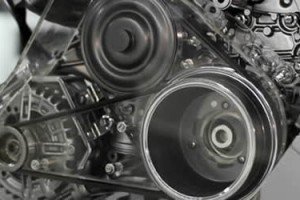Tip to Inspect Your Car Belt

Each and every vehicle must have an accessory belt which impels features such as the alternator and air-conditioning compressor and perhaps the power steering and water pump. In the older cars you are likely to find separate V-belts for each component whereas in the newer cars you will find only one serpentine belt to drive them all. Belts in the car are likely to wear and tear over time and failure in the belts may damage your car engine. Hence you are advised to check the belts on the regular basis and below are given the instructions for checking the car belt.
• While driving your car you must listen to the squealing sound from the engine. The sound of the engine will let you whether one or two belts are worn, loose or damaged.
• You must check the belts for the sign of wear. Not only by listening to the sound would help you know about the damage of the belt but also it is necessary to visually inspect the belts. You can pinch, squeeze and twist the belt to see cracks, fraying, splits or brittle places. On the serpentine belt you can look for missing grooves or places where the belt’s layers have separated.
• You must check the places of the car belts to see whether the rubber of the belt is slick or glazed in appearance. If you find slick spot on the belt then it can slip the belt from its position and may be result into overheating and cracking.
• You must inspect the pulley along with the belt. You must look for rubber deposits as well as worn spots which could catch the belt and cause it to break. Along with this you must check the alignment of the belt on the pulley. The belt of the car should be lined up straight on the pulley.
• You must inspect the belt tension. It should not be more than one-half to one inch.
